Why women are turning to strength training now more than ever
June 26th, 2023 | 5 min. read
By Jen Azevedo
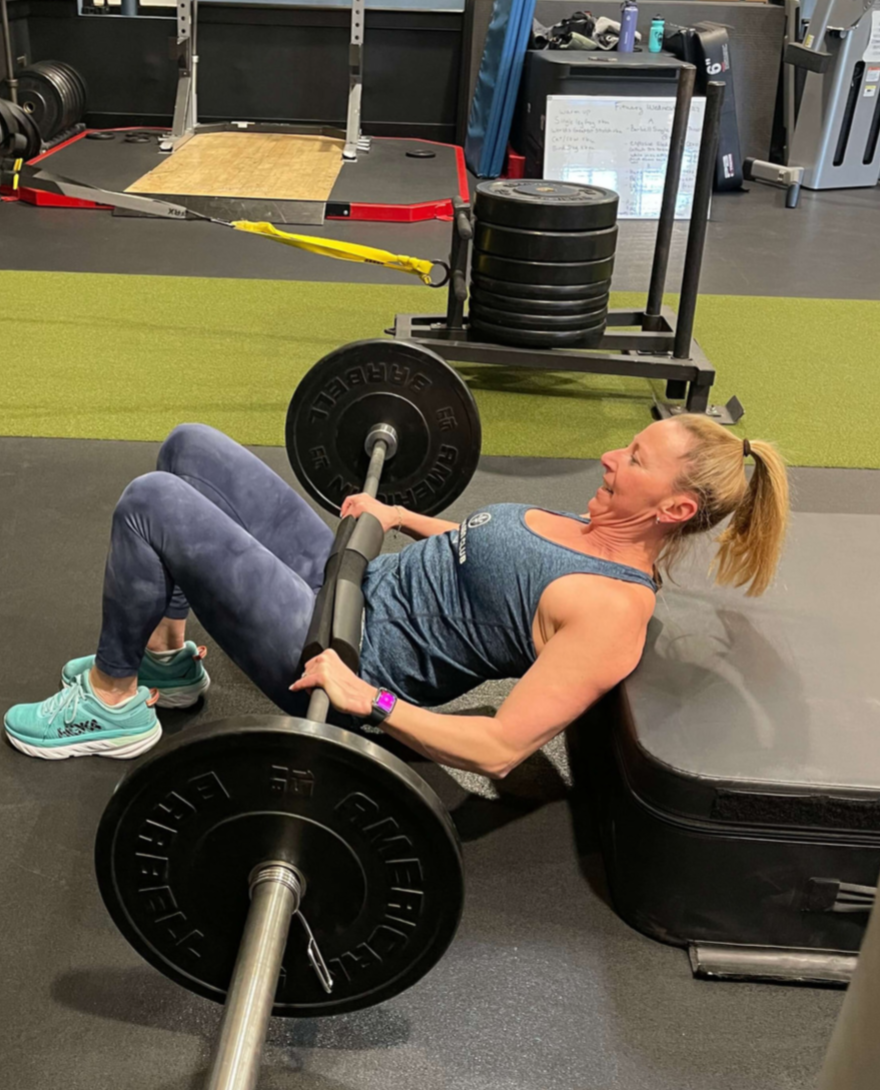
When the two words “strength training” are uttered from someone’s mouth, there tends to be one image that comes to mind: big muscular men lifting barbells with hundreds of pounds of weight.
Somehow a gray-haired middle-aged woman has not become the poster child for strength training. But thousands of women are working to change that.
Now more than ever, women are turning to strength training to get stronger, leaner, and tougher.
The Paseo Club is a social club in the Santa Clarita Valley that offers fitness classes, pickleball and tennis courts, and a junior Olympic pool. We offer both group classes and personal training to our members.
In this article, we will discuss what strength training is, its benefits, myths about strength training, and why women are bringing strength training into their workouts.
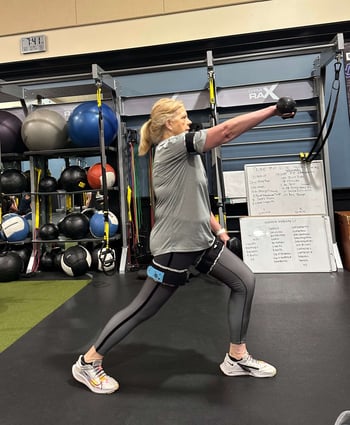 What is strength training?
What is strength training?
There are five primary ways to strength train. You can use equipment or no equipment — using your body to build your strength.
- Body weight: use your own body weight and the force of gravity to perform various movements, including push-ups, squats, planks, pull-ups, and lunges
- Free weights: dumbbells, barbells, kettlebells, medicine balls, or even objects around the house
- Weight machines: machines with adjustable weights that give your muscles resistance
- Resistance bands: rubber bands that provide varying levels of resistance when stretched
- Suspension equipment: consists of ropes or straps anchored to a sturdy point in which a person uses their body weight and gravity to perform various exercise
What are the benefits of strength training for women?
Women see both physical and mental benefits when they incorporate strength training into their fitness routines.
Physical benefits
Women become stronger and have greater endurance as they train. Progress in strength training is easy to measure by adding weight or reps or shortening time frames for timed workouts.
- Weight loss
- Increases muscle mass
- Increase in bone density
- Increased quality of sleep
- Improves body composition
- Burns more calories while your body is at rest
Mental benefits
Exercise is known as one of the most reliable tools to use to reduce stress and improve mood.
- Boosts confidence
- Increases goal setting
- Decreases stress levels
- Functions as an outlet for self-care
- Increases feelings of accomplishment and well-being
How does strength training affect women's identity?
Strength training helps women decompress from the pressure of family, jobs, and relationships. It brings balance as they focus on themselves rather than other responsibilities.
Women gain confidence as they complete a lift they couldn’t do a month ago or start seeing their body change.
Women feel empowered by their physical strength. This sense of empowerment often fuels their inner strength, helping them to advocate for positive changes in other parts of their lives, whether it is applying for a new promotion at work, planning a trip abroad, or making changes in their relationships.
Strength training also provides a sense of community as women meet other women who are strength training.
What are some of the myths that deter women from trying strength training?
There is a myth that strength training is just for men who want to lift heavy and get big. But that is only one aspect of strength training.
Strength training is for people of all ages and abilities. In fact, it is so effective in supporting people’s health that the Center for Diseases Control recommends everyone strength train at least twice a week.
So what is stopping us? Many women are misinformed, believing myths that are outdated and inaccurate.
- You will gain weight
- You will get too bulky
- Weight training is a “guy thing”
- You increase your risk of injury
- Your progress will not compare to a man’s progress
Women often feel intimidated (especially beginner strength trainers) to be in “that section” of the gym. Fear of looking incompetent can breed discouragement, deterring women from beginning and/or continuing strength training.
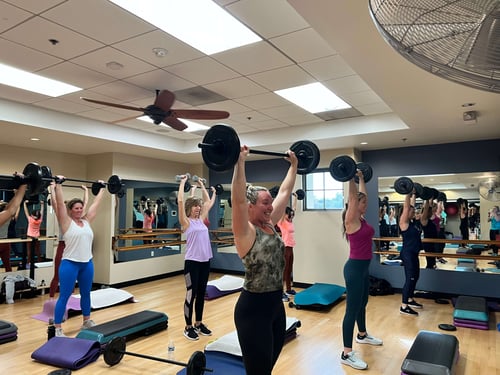 Why are women now turning to strength training?
Why are women now turning to strength training?
Women tend to juggle several jobs — careers, children, friendships, partnerships, volunteering, caring for elderly parents, chores at home, and more.
Few of us have the leisure to train for hours every day. We need workouts that can be completed in short periods of time and give us results.
People used to believe that cardio was the best way to be fit and reach a healthy weight. Although cardio has its benefits, it is now known that strength training is as important, if not more so, for overall physical health.
Women are finding community in joining strength training classes. With other women at their side, and noticing the positive changes in their bodies and psyches, women are discovering that strength training is a great fit for them.
6 steps to begin strength training
Whether you want strength training to be your primary exercise or you are cross-training to get better at your favorite sport, anyone can benefit from strength training.
If you are new to strength training, here are some steps you can take to begin:
1. Start light
You may want to begin with bodyweight movements such as squats, lunges, push-ups, situps, and planks. These movements will target all the major muscle groups and give you a great workout.
If you want to add weights to your workout, begin with 5-15 pound barbells or kettlebells. Workout sessions can be modest — 7-10 reps and 2-3 sets per movement. Initially, an entire workout can last 25 minutes.
2. Rest between sets
Strength training is meant to be hard. Try to take yourself to the edge of fatigue and then take a break and do it again. Try the formulas Tabata, EMOM, and 40/20 workouts. You can also schedule 60 seconds of rest after every set you finish.
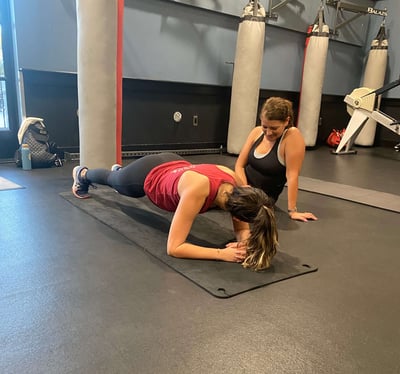 3. Increase gradually
3. Increase gradually
You can add reps, sets, duration, and weight over time. Do not rush to push hard, it will increase your chance of getting discouraged or even injuring yourself.
One of the best features of strength training is that it will not take long before you feel stronger and are ready to challenge yourself. The movements will be easier, and the weight will feel lighter. When this happens, you know you can add a new element to your workout — more weight, reps, another set, a band with more resistance, etc.
4. Limit the length of your workout
When you strength train, you can keep your workouts short. Strength training is a more intensive form of exercise, and you can complete the program within 45 minutes.
5. Warm-up and cool down
Mobilize and stretch your body before and after exercising. This will help you feel less sore, improve your recovery, and minimize the chance of injury.
6. Have rest days
What makes your workouts effective is that you have adequate energy and stamina to challenge yourself. If you are strength training too frequently, you can mentally and physically plateau or burn out.
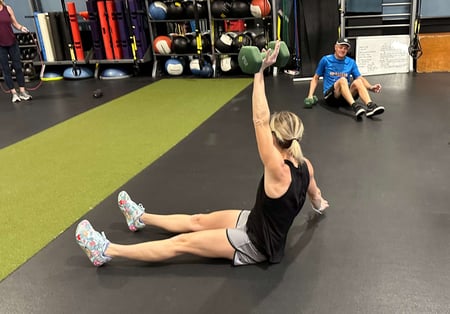 Final thoughts on women's strength training
Final thoughts on women's strength training
Strength training is not just about getting strong. Strength training helps women look and feel better, which boosts their confidence and self-worth. This increase in self-esteem has a growing impact in the rest of her day-to-day life, helping her to live a happier, more fulfilled life.
The Paseo Club has helped women (and all people) actualize their fitness dreams for over twenty years. We offer over 60 fitness classes every week, including the strength training classes:
- HIIT
- LIFT
- TRX and Core
- Strictly Strength
- TRX and Pilates
- Strength and Tone
- Weighted Bootcamp
- Core Tone and Strength
- Blood Flow Restriction Training

If you are looking for a fitness community that cares about health, fitness, and social connections, then the Paseo Club may be the place for you. Schedule a tour today to see our facilities and meet members, staff, and instructors. 
Check out these three articles to learn more about training.
- Terrie’s journey with strength training at the Paseo Club
- The 9 benefits of personal training (and how it helps you to achieve your fitness goals)
- The 10 benefits of strength training during perimenopause and menopause (strength classes at the Paseo Club)
Jen Azevedo is a tennis professional, pickleball professional, personal trainer, group exercise instructor, and the general manager of the Paseo Club. She loves the community at the Paseo Club and that it is also a safe and fun place for her daughter. Jen’s favorite activities are joining her tribe for trail races or her partners for tennis matches. Occasionally Jen slows down to relax with a book — she reads over 100 a year!
Topics:


